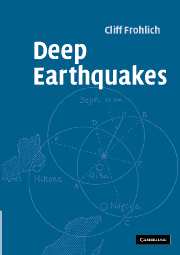Solid earth geophysics in 1900
Nowadays, we often forget how recently we came to our present understandings about the structure and dynamics of the Earth (e.g., see Brush, 1980). In the year 1900, Emil Wiechert had just proposed that the Earth had a core, which he said was solid and made of iron (Wiechert, 1897); Clarence Dutton had just coined the word “isostasy” (Dutton, 1889; reprinted 1925); one of the first international geophysics journals – Gerlands Beiträge zur Geophysik – had just published its first issue in 1887; and nobody had yet rejected Alfred Wegener's theory of continental drift, because it hadn't yet been proposed (Wegener, 1915).
In seismology, there was much confusion about the meaning of the various seismic phases observed on the few crude seismographs available at the time (e.g., Dewey and Byerly, 1969). While Poisson had established the existence of P and S waves earlier in the nineteenth century, it wasn't clear to all that they would be observable. Knott (1888), for example, performed a theoretical analysis of the reflection and refraction of waves at discontinuities. He concluded that P and S would be mixed up by conversions and reflections on passing through heterogeneous materials in the earth's crust, so it would be futile to look for a separation of the two kinds of waves, or to infer anything about the origin of the shock from the nature of the surface motion.
